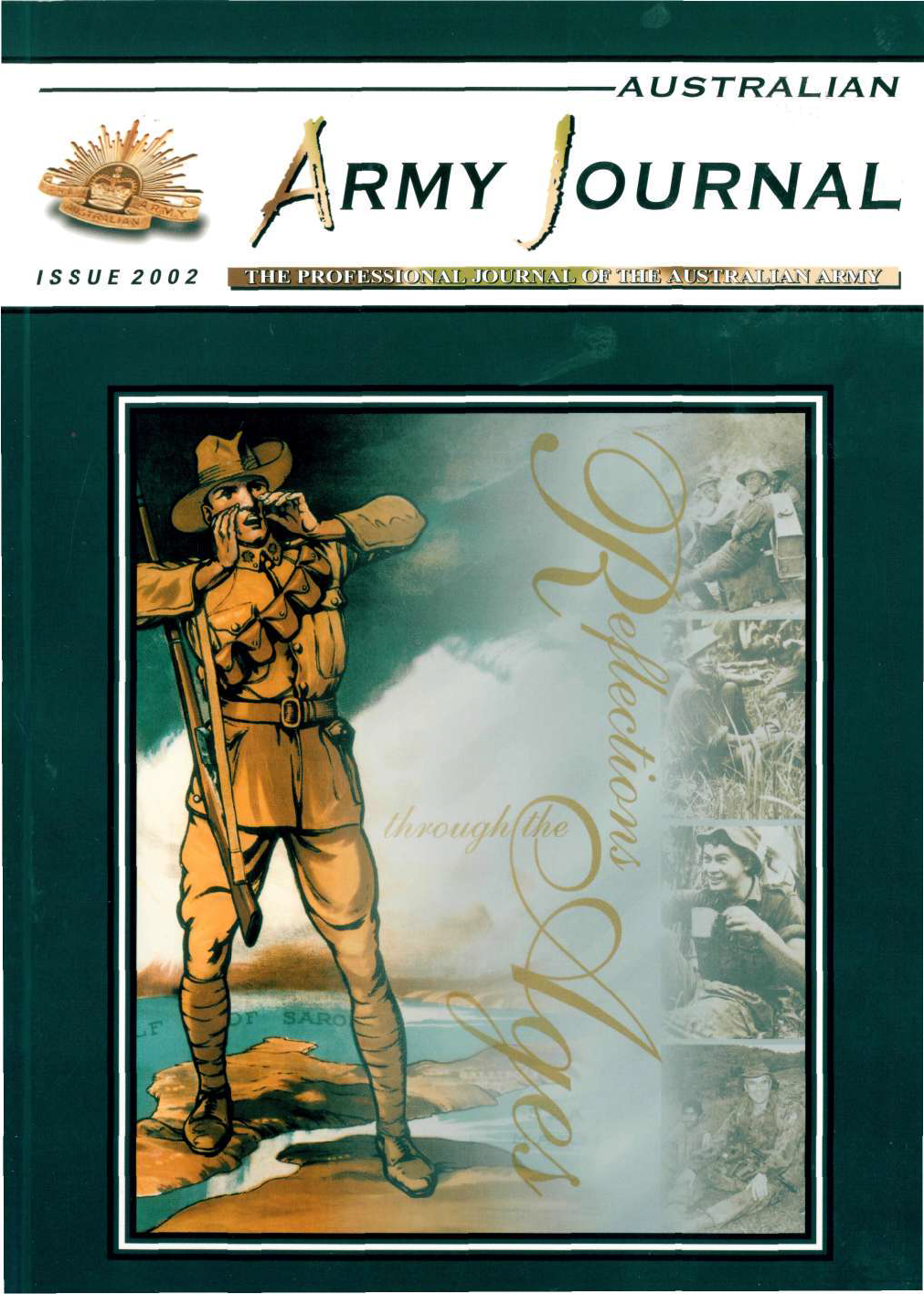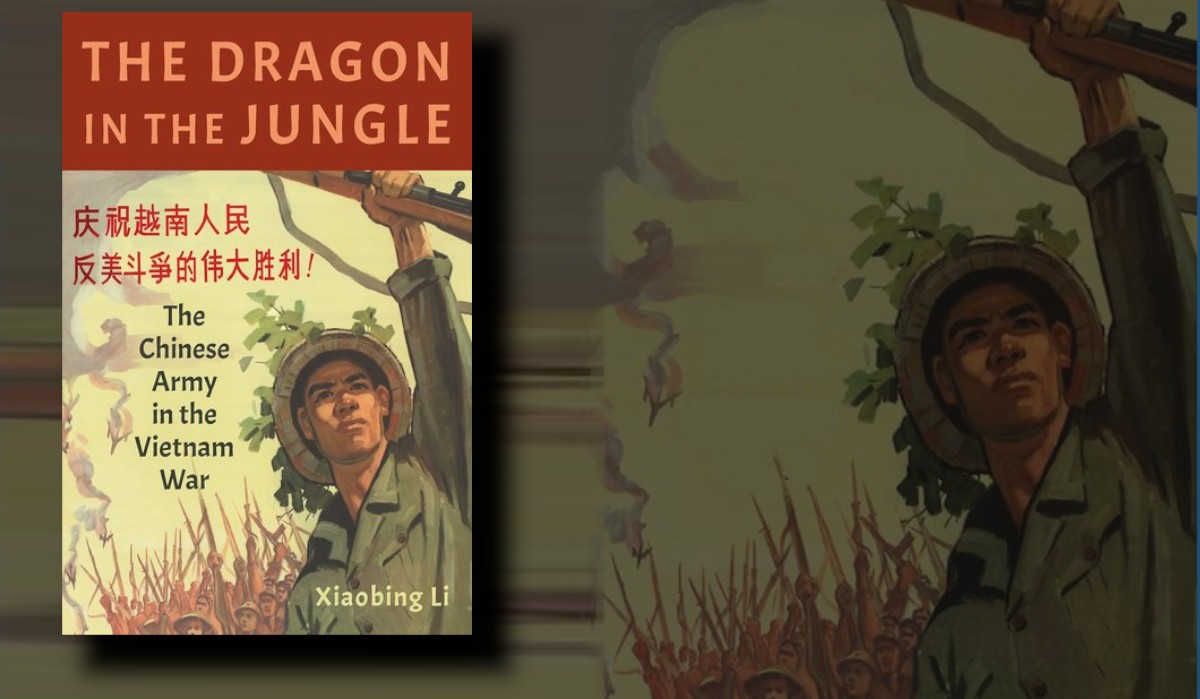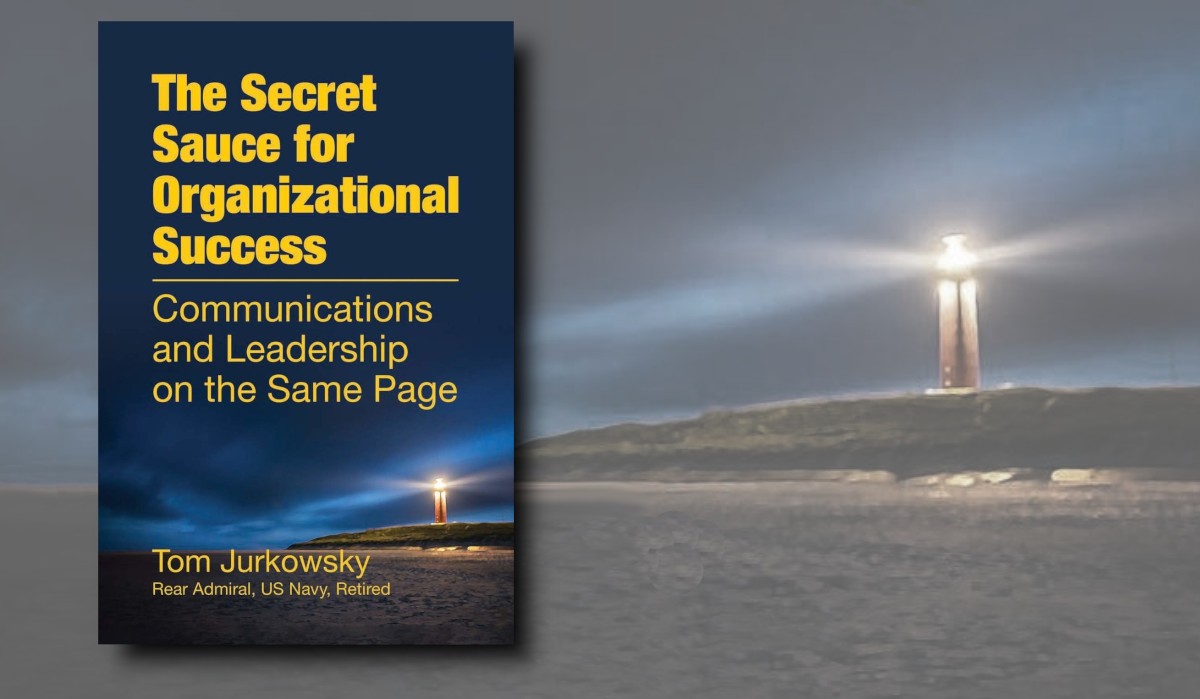Issue 2002
This, the centenary Army Journal is a celebration of the Australian Army. It celebrates the uniqueness of the Australian soldier and those traditions held so dear that are born of the mud and the blood of this Army’s historical pageant. From the first forward step of the Australian volunteer, ready to serve on foreign soil under a flag not his own and for a cause that he little understood, the Australian soldier has forged his own battle honours, on his own terms, always characterised by those qualities that have forged his reputation the world over. Australian soldiers are renowned for their courage, resourcefulness, initiative and sheer resilience in the face of overwhelming odds. In the same way, they fly the flag of compassion, generosity, empathy and above all, humour and irreverence in the most adverse of circumstances. Australian literature is replete with discussion of the much-vaunted ANZAC legend, regarded by some as a cherished myth and by others as a campaign legend. However it is regarded, the story of the diggers who fought at Gallipoli bears the hallmarks of any tale of any Australian campaign. Australian soldiers thrive on adversity, love a challenge and are at their best when confronted with overwhelming odds. From the Boer War through the two World Wars, Vietnam, Korea, to the current crop of peacekeeping and observer missions, Australian soldiers have made an indelible mark on each campaign and have contributed to the Army they are proud to serve today. Australian soldiers are proud soldiers. Australian veterans are likewise proud of their service and of the Army they played a significant role in moulding and shaping. The Australian people are proud of their army and proud of its achievements. The young faces that pray quietly at the Gallipoli memorial at ANZAC Cove every year bear silent testimony to this pride. The increasing numbers at ANZAC Day parades in tiny country towns and city streets, the gatherings at lonely windswept memorials and the poignant tributes at the funerals of veterans as the ranks gradually thin tell the tale of a nation that is determined not to forget. The Australian Army is truly of the people and for the people and a century of tradition is the proud flag bearer which signifies this bond.
This centenary journal tells the tale of the people’s army. It tells of the ordinary soldier, be that soldier an Army nurse, dispensing courage and compassion against overwhelming odds, or a World War I company commander, lost literally, in the fog of war. As always, the Journal also acts as a vehicle for the discussion of current topics of debate and this issue presents a smorgasbord of discussion, spanning the Gallipoli campaign through to the SAS in the urban and ether domains. This issue commences its march appropriately, with the traditional Australian military herald, the Gallipoli campaign. Anthony John’s keen analysis of the failure of the August offensive focuses firmly on the issue of the operational art and the crucial role of the commander. Battle leadership and clarity of vision are the essential elements that spelt victory for the Turkish forces and ultimately, defeat for the ANZACs. The ‘Troopship Southland’ is Rob McClure’s tribute to the Australian troops aboard the Southland and their extraordinary courage and resourcefulness in the face of a torpedo attack and a mutinous crew. He describes the reaction of those who watched torpedos approach and lifeboats fail and yet volunteered to stay aboard a sinking vessel on the slim chance that they could nurse it to port.
The tale of Captain Edward Harnett is the story of his descent literally into the fog of war as a company commander during the Battle of Amiens in World War I. Lost in the mist and confusion of the battlefield, Harnett musters his courage, rallies his few remaining troops and doggedly heads for his objective, displaying the dichotomy of nonchalance and determination that often characterises such accounts. Determination is also the hallmark of Judith Spence’s moving account of the return of World War II Australian Army nurses to Banka Island, the scene of a massacre of which Vivian Bullwinkel was the only survivor. The anguish of the Army nurses at having to leave their posts in the last days before the fall of Singapore, their harrowing experiences as prisoners-of-war and the incredible legacy that they pass to their modern-day successors are the basis for this poignant tribute to Army nurses then and now.
Lorna Todd continues this tribute as she writes of her experiences in Rwanda. The compassion and desperation with which Australian Army nurses struggled to tend the injured and traumatised Rwandan people is truly reflective of the spirit of mateship that Australian soldiers bring to any peacekeeping operation of which they are part.
Continuing the medical theme, ‘Out Amongst the Tangled Wire’, is a poignant description of the role of stretcher-bearers and those courageous volunteers who ministered first aid under the horrendous circumstances that characterised the World War I battlefield. The lament of the stretcher-bearer and the total feeling of hopelessness pervade what is truly an account of the resilience and stoicism of the Australian soldier in the direst of adversity.
The discursive element of this centenary journal characterises the keenness of members of the Australian military to engage in debate on topical issues. Mick Ryan’s discussion of manoeuvre theory is enlivened by his use of historical examples which are surprisingly applicable to the current climate. The underlying concept that drives this discussion is that there is nothing new about manoeuvre warfare and that it comprises time-honoured tactics under a new guise. David Coghlan explores Australian Defence policy in the post-Cold War era up to the drafting of the latest White Paper, noting the folly of pursuing a one-dimensional approach to defence policy. In this current climate, his warnings of Australia’s need for a defence policy framework that allows it to respond appropriately to the security challenges that may lie ahead are both pertinent and timely.
Jim Truscott’s ‘Special Operations in the Urban and the Ether Domains’ also presents a chilling and timely reminder of the potential SAS role in urban operations and unconventional warfare. Lessons learnt and the role of industry in fashioning the SAS-in-being and the SAS-after-next form the mainstay of compelling arguments for re-designing the SAS for those tasks which are becoming its modern raison d’être.
‘A Modicum of Substance’ is an article of indulgent reminiscence. It is also a timely reminder of the birth of the original Army Journal. It conveys the angst of every officer who has ever been tasked with the impossible by a senior and finds himself pathologically unable to refuse. Fortunately, Eustace Keogh was also unable to refuse and the story of the rise and rise of the Journal is now history. In an interesting reflection of the current thoughts of many senior officers and academics, Keogh emphasises the need for an intellectual medium for debate as crucial for the growth of the Army. This is the very essence of the Journal. It is very much the Army’s journal and must stand as the Army’s foremost vehicle for discussion, particularly given the maelstrom of conflicting issues that confront today’s soldier.
The final article in this the centenary journal is Anthony John’s incisive review of the first volume of the Army’s The Australian History of Defence series, by Dr Jeffrey Grey. This is a book that does much to debunk the ANZAC myth of the larrikin digger, replacing it with a vision of the way in which the Australian people view their Army. It is very much a book for those who have served in the Army itself, for those who have an abiding interest in issues of defence and security or for those who value the opportunity to learn about one of the oldest national institutions in this country.
The centenary journal is very much about what characterises today’s Army. It celebrates those essential qualities of the soldier that forge the traditions that the Army holds dear. It celebrates the triumph of the Australian soldier over adversity, the depth of compassion, the ingenuity and resourcefulness, the courage and humour that are the stark signposts of survival. They are also the signposts of success, previously in battle, more recently in peace operations and for those substantial and unpredictable challenges that lie ahead.
The Journal also celebrates the ability of the Army to intellectualise, to challenge policies, ideals and processes and to think ahead, pursuing possibilities into future dimensions. The Journal is the Army’s litmus. It is the leveller, promoter and devil’s advocate. It is the path to preserving the traditions that forged the Army of today, it is the active mindset of its members and it is the blazing precursor to the future.
M.W. Trafford
Colonel
| Attachment | Size |
|---|---|
| aaj_2002.pdf (24.7 MB) | 24.7 MB |

Publication Date
2002


